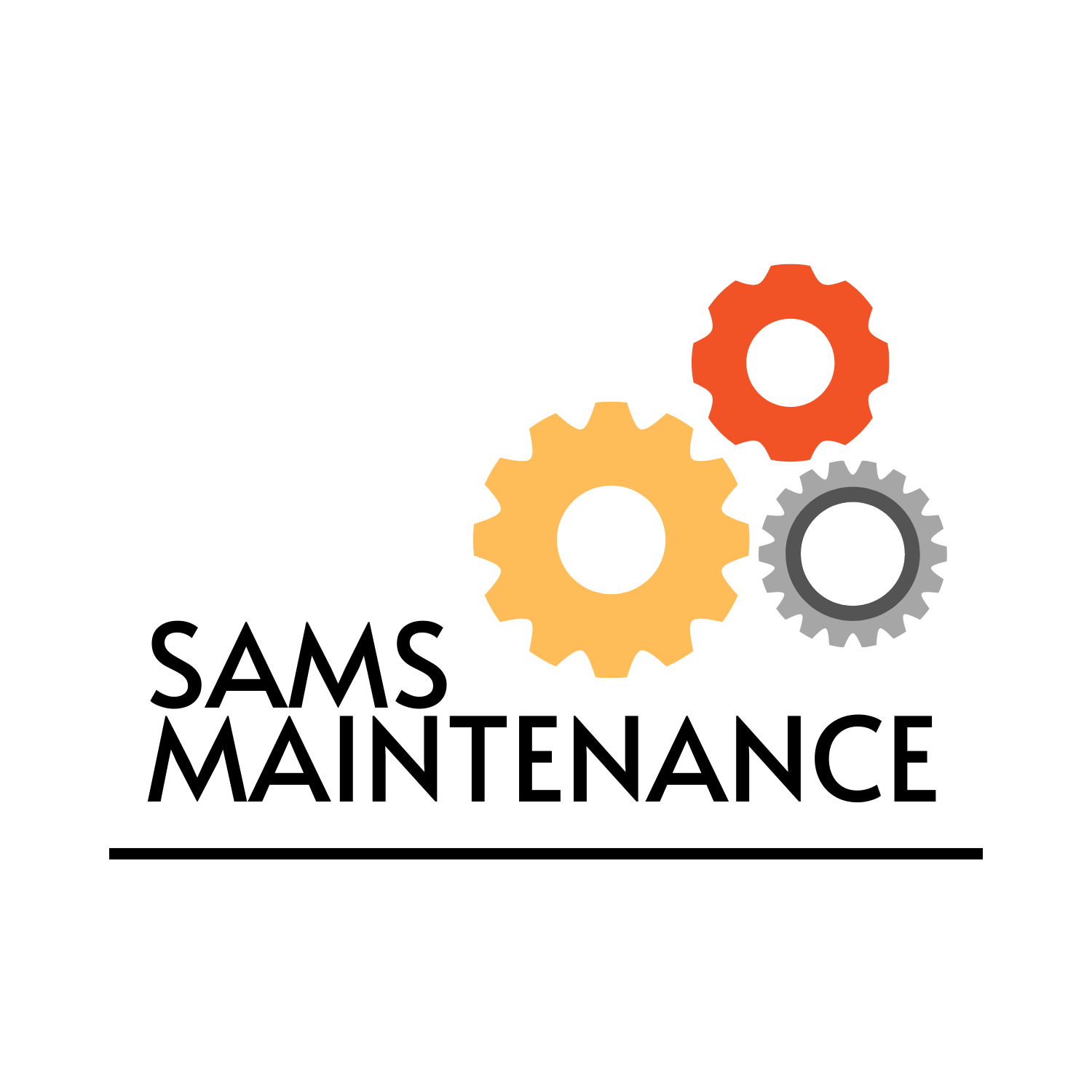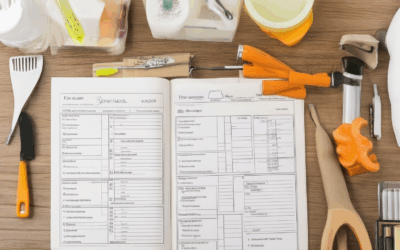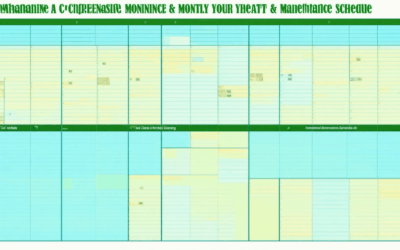Keeping your home in top shape doesn’t have to be overwhelming when you’ve got a well-structured monthly maintenance checklist. As a homeowner, prioritizing regular upkeep can save you from costly repairs and extend the lifespan of your property. Whether it’s checking for leaks, organizing a cleaning schedule, or preparing for seasonal tasks, staying proactive ensures your home remains a safe and comfortable place to live. This comprehensive guide dives into the essential monthly maintenance tasks every homeowner should know, offering practical tips, tools, and strategies to keep everything running smoothly. From creating a personalized maintenance schedule to exploring the types of tasks that matter most, this article equips you with the knowledge needed to take care of your home effectively. By following a consistent routine, you can prevent potential issues before they arise and enjoy the peace of mind that comes with a well-maintained living space.
Key Takeaways
– Cost Efficiency: Save on costly repairs by addressing issues early and avoiding unnecessary breakdowns.
– Peace of Mind: Enjoy reliability and safety with regular checks on your home’s systems.
– Extended Lifespan: Protect your investments by extending the life of your appliances and equipment through routine care.
– Proactive Approach: Stay ahead of potential problems with scheduled maintenance to prevent larger issues.
– Comprehensive Coverage: Ensure your HVAC, plumbing, electrical, and appliance systems are all well-maintained for optimal performance.
– Professional Reliability: Trust expert technicians to keep your home safe, efficient, and running smoothly.
– Tailored Plans: Customize maintenance schedules to suit your unique needs and lifestyle.
– Financial Planning: Budget effectively with reserved funds for unexpected repairs and upgrades.
– Worry-Free Living: Enjoy convenience and stress relief knowing your home is in great shape.
– Safety Assurance: Identify and address potential hazards before they cause harm.
– Energy Savings: Improve efficiency and lower utility bills with regularly maintained systems.
– Prevent Downtime: Minimize disruptions by addressing issues before they escalate.
– Investment Protection: safeguard your home’s value with timely maintenance and repairs.
– Regular Inspections: Catch small problems early to avoid big surprises later.
– Expert Technicians: Access trusted professionals to ensure your maintenance is done right.

What Are Examples of Maintenance Tasks?
Residential Maintenance
- Inspect and clean gutters and downspouts to prevent clogs.
- Lubricate moving parts of appliances like garage doors and lawn mowers.
- Check and replace air filters in HVAC systems.
- Test smoke detectors and carbon monoxide alarms.
- Clean and service chimneys and flues annually.
- Examine windows for cracks and drafts.
- Service water heaters and plumbing fixtures.
- Maintain landscaping, pruning trees, and trimming grass.
Commercial Maintenance
- Inspect and repair roofing systems regularly.
- Perform scheduled equipment inspections for machinery.
- Service and maintain parking lots and roads.
- Monitor and clean ductwork in HVAC systems.
- Inspect and repair electrical systems and wiring.
- Service and test fire suppression systems.
- Maintain and monitor security systems.
- Schedule regular pest control treatments.
Industrial Maintenance
- Inspect and repair large-scale equipment like turbines and generators.
- Service and maintain high-pressure boilers and tanks.
- Inspect and replace worn-out belts and bearings.
- Clean and maintain large-scale piping systems.
- Service and test industrial electrical panels.
- Monitor and maintain cooling towers and refrigeration units.
- Inspect and repair storage tanks and vessels.
- Service and maintain heavy machinery and vehicles.
For professional guidance and tools to perform these maintenance tasks effectively, visit The Home Depot or Lowe’s for all your maintenance needs.
Monthly Routine Maintenance Plan
Monthly routine maintenance is essential for keeping your home in great shape and preventing unexpected issues. Here’s a detailed guide to help you stay on track:
- General Checks
- Inspect and clean air filters in HVAC systems to ensure optimal airflow.
- Test smoke detectors and carbon monoxide alarms to maintain safety.
- Check battery levels in flashlights and other devices.
- Examine pipes for leaks or damage, especially in basements and crawl spaces.
- Schedule regular service for water heaters and furnaces to prevent breakdowns.
- Home Systems Maintenance
- HVAC System : Clean or replace air filters, check ductwork for blockages, and ensure your thermostat is functioning correctly.
- Plumbing : Inspect for leaks around fixtures, under sinks, and pipes. Test water pressure and temperature.
- Electrical : Check for loose wires, tripped circuit breakers, and outdated appliances that may pose hazards.
- Exterior Maintenance
- Inspect roof for missing shingles or damaged flashing.
- Clean gutters and downspouts to prevent clogs and water damage.
- Check siding for cracks or peeling paint and repair as needed.
- Trim trees and bushes to maintain clearance from your home and power lines.
- Safety Checks
- Test fire extinguishers to ensure they work properly.
- Inspect windows and doors for proper sealing and functionality.
- Check for trip hazards like loose rugs, toys, or obstacles in walkways.
- Final Review
- Review all checks completed during the month to ensure nothing was missed.
- Plan ahead for any upcoming maintenance tasks or seasonal chores.
- Schedule professional services if needed to address any identified issues.

What Are the 7 Types of Maintenance?
Understanding the different types of maintenance is crucial for ensuring the longevity and optimal performance of systems, equipment, and structures. Here’s a breakdown of the seven primary types of maintenance:
- Preventive Maintenance : This involves regularly scheduled tasks aimed at preventing failures before they occur. Examples include oil changes, tire rotations, and HVAC system cleanings.
- Predictive Maintenance : Utilizes data analytics and monitoring tools to predict potential issues based on equipment behavior. Proactive measures are taken before problems arise.
- Planned Maintenance : Similar to preventive maintenance, this involves a predetermined schedule to ensure all components are serviced at the optimal time, reducing downtime.
- Condition-Based Maintenance : Maintenance activities are triggered based on the condition of equipment or systems. Sensors and diagnostic tools are used to determine when service is needed.
- Reactive Maintenance : Also known as breakdown maintenance, this is performed when equipment fails. It focuses on resolving immediate issues and restoring functionality.
- Emergency Maintenance : Provides immediate response to critical failures that disrupt operations. Often requires urgent attention to prevent significant damage or safety hazards.
- Corrective Maintenance : Addressing specific defects identified through inspections or failure analysis. This type often follows a reactive approach but with a focus on long-term solutions.
Each type of maintenance plays a unique role in ensuring reliability, productivity, and cost-effectiveness. Implementing a combination of these strategies can lead to better overall asset management and operational efficiency.

What is Monthly Maintenance?
Monthly maintenance refers to a routine service or check-up schedule designed to ensure that systems, equipment, or properties remain in optimal working condition. It is a proactive approach to prevent issues before they arise, saving time, money, and effort in the long run.
Benefits of Monthly Maintenance
- Cost Efficiency: Catching potential problems early can save on costly repairs later.
- Peace of Mind: Knowing your systems are functioning properly can reduce stress and ensure reliability.
- Extended Lifespan: Regular inspections can extend the lifespan of your appliances and equipment.
Types of Monthly Maintenance Services
- HVAC Systems: Regular cleaning and inspection of ductwork, coils, and filters to ensure efficient heating and cooling.
- Plumbing Systems: Checks for leaks, clogs, and wear to prevent breakdowns and water damage.
- Electrical Systems: Inspections of wiring, switches, and outlets to ensure safety and proper function.
- Appliance Maintenance: Cleaning and servicing devices like refrigerators, washers, and HVAC units to optimize performance.
Why Choose Professional Monthly Maintenance?
Professional services often offer comprehensive plans tailored to your needs, ensuring that no detail is overlooked. Whether you’re managing a home, business, or property, having a trusted provider handle your monthly maintenance can give you confidence in the reliability of your systems.
Competitor Mention
While there are many providers offering similar services, it’s important to choose a reputable company. Companies like Angie’s List and HomeAdvisor can help connect you with qualified professionals. Always verify reviews and ratings to ensure you select a reliable provider.
Scheduling regular monthly maintenance is a smart move for anyone who values convenience and long-term peace of mind. Don’t wait until something breaks—take proactive steps today to protect your investments tomorrow.
Contact us today to learn more about our maintenance plans and how we can assist you!
What is Included in Monthly Maintenance Fees?
At Sams Maintenance, we understand that monthly maintenance fees are essential for preserving the value and functionality of your property. Here’s a breakdown of what typically goes into these fees:
- Operating and Service Costs: This covers day-to-day expenses like utilities, garbage disposal, snow removal, and window cleaning.
- Insurance: Includes liability and property insurance for the common areas of your building or community.
- Management Costs: Covers administrative duties, staff salaries, and other operational expenses related to managing the property.
- Reserve Fund Contributions: A portion of the fee is allocated to a reserve fund for unexpected repairs or major projects like replacing roofs or HVAC systems.
- Common Area Maintenance: This includes landscaping, painting, and repairs to shared spaces.
- Security Systems and Technology: Covers maintenance and upgrades for security systems, elevators, and other technology-related expenses.
- Legal and Regulatory Fees: Includes any legal obligations or compliance costs related to property management.
For more details on how these fees work, visit our partner site Condos.ca or explore our maintenance tips section for practical advice on managing your property’s upkeep.

What is Included in Maintenance?
Maintenance encompasses a variety of activities aimed at preserving the condition and functionality of assets, whether they are physical structures, machinery, vehicles, or other items. Here’s a breakdown of what typically falls under maintenance:
Types of Maintenance
- Preventive Maintenance: Scheduled tasks to prevent breakdowns and extend asset lifespan. Examples include oil changes, tire rotations, and HVAC system cleanings.
- Reactive Maintenance: Addressing issues as they arise, such as fixing leaks or repairing equipment that has already broken down.
- Regular Inspections: Checking for wear and tear, damage, or potential hazards before they become problems.
- Replacement and Upgrades: Replacing worn-out parts or upgrading systems to improve efficiency and safety.
Components Covered in Maintenance
- Equipment Repair/Replacement: Fixing or replacing machinery, tools, and industrial equipment.
- Building/Facility Maintenance: Repairs and improvements to structures, including roofs, plumbing, and electrical systems.
- Vehicle Maintenance: Services like brake checks, battery replacements, and engine diagnostics for cars, trucks, and other vehicles.
- Furniture Repair/Replacement: Fixing or replacing chairs, desks, tables, and other household items.
Importance of Regular Maintenance
- Extends the lifespan of assets, reducing replacement costs.
- Ensures safety by identifying and addressing potential hazards early.
- Improves energy efficiency, lowering utility bills.
- Helps in preventing unexpected breakdowns, minimizing downtime.
Conclusion
Maintenance is a critical aspect of managing any property or asset effectively. By investing time and resources into regular maintenance, individuals and organizations can save money in the long run, ensure safety, and maintain the integrity of their belongings. Whether it’s a home, vehicle, or industrial equipment, routine care is essential for longevity and performance.




0 Comments